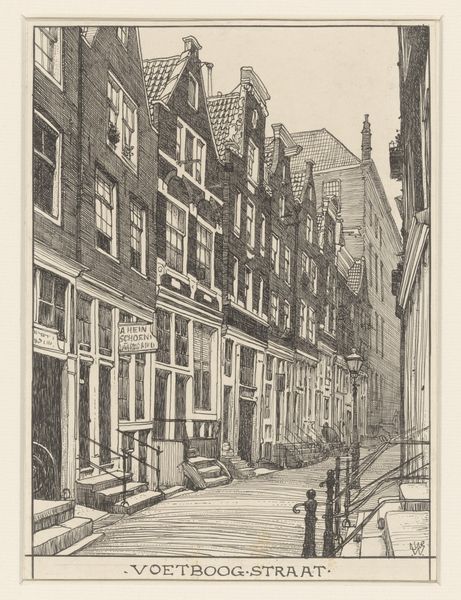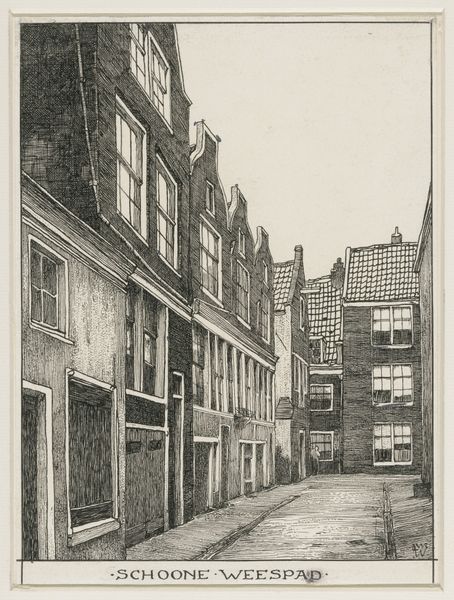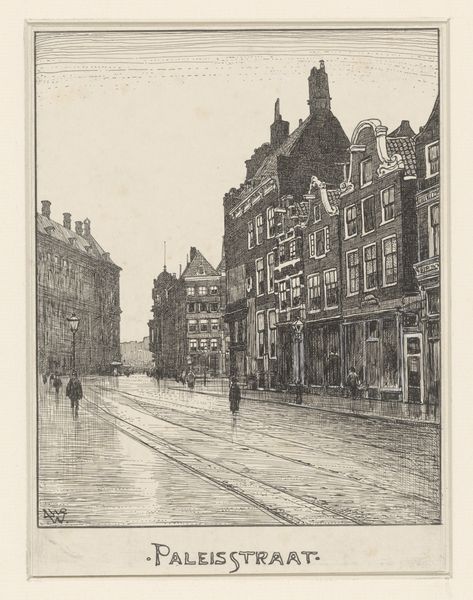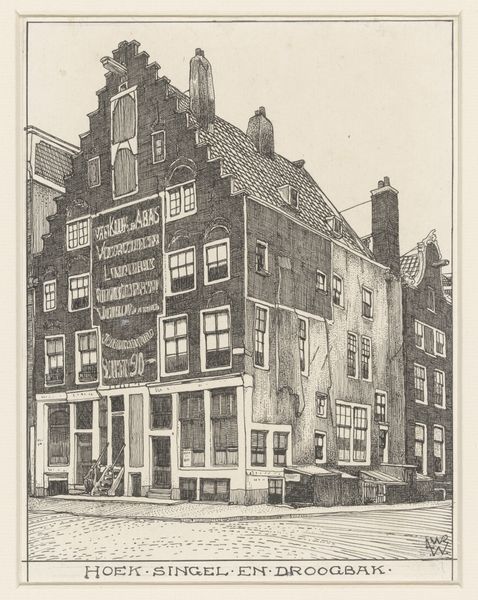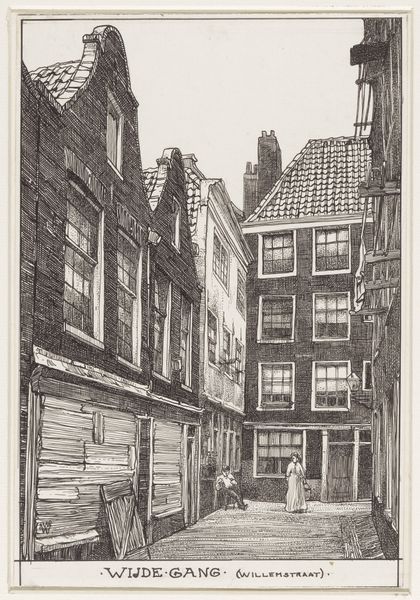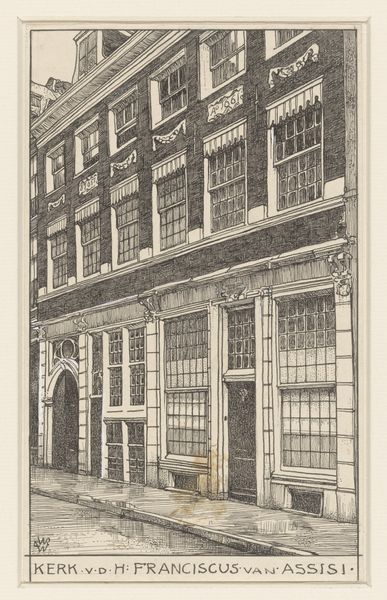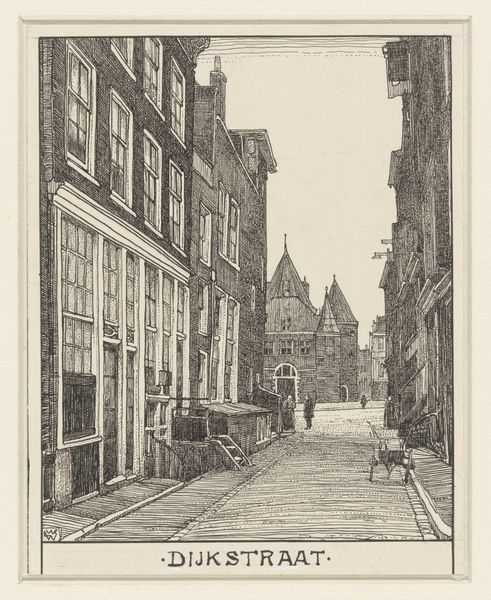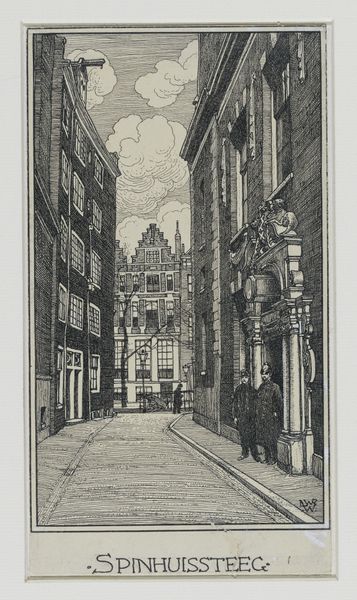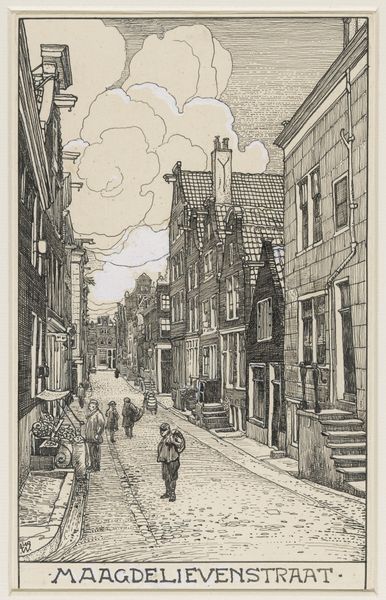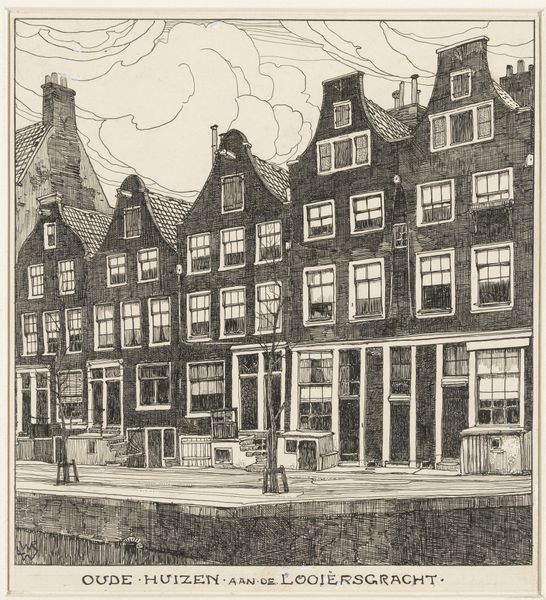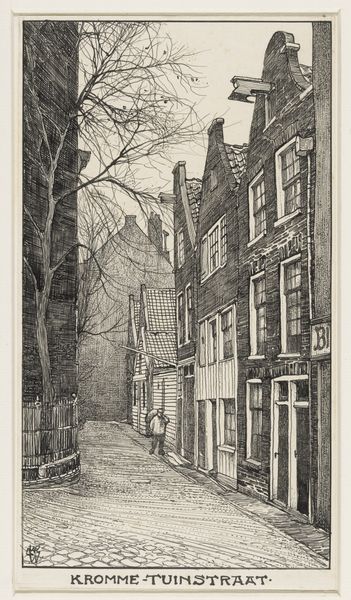
drawing, paper, ink
#
drawing
#
pen drawing
#
paper
#
ink
#
cityscape
#
street
Dimensions: height 155 mm, width 137 mm
Copyright: Rijks Museum: Open Domain
Curator: Welcome to the Rijksmuseum. Before us hangs Willem Wenckebach’s pen and ink drawing, "Taanstraat te Amsterdam," dating from between 1870 and 1926. Editor: My first thought is somber, almost oppressive. Those densely hatched buildings loom over the narrow street. There's an overwhelming verticality to it. Curator: It’s intriguing to consider the production. Wenckebach meticulously layered ink strokes to build form and shadow. The hatching technique isn't just descriptive; it's the labor made visible. Editor: But look at those stepped gables, the dormer windows. Each one is slightly different, asserting individuality against the uniformity of the street. Gables in Dutch art traditionally represent family lineage, aspiration, even prosperity. Do you think there's commentary here about the illusion of these status symbols? Curator: Potentially. Wenckebach certainly gives equal attention to the mundane details, like the street paving and the single figure standing there. The buildings are not idealized. Consider the materials: humble paper and ink transformed through skilled labor into this durable image. Its endurance also tells us something about social and economic changes to streetscapes over time. Editor: I see a lone figure by what seems like an entryway; I wonder, are we meant to project ourselves into that isolated character? There’s a clear, deliberate construction here of 'Dutch-ness.' Can't you sense a tension between reality and the picturesque ideal of Amsterdam being built through this drawing? Curator: I think that friction is precisely what makes it a valuable historical document, it acknowledges the lived realities inherent in urban development. A contemporary viewer can see the work not only for what it represents, but how it was made, and what conditions shaped both subject and artist. Editor: This image definitely encourages contemplation, prompting us to decode the hidden cultural signals woven into a seemingly simple street view. Curator: Yes. Reflecting on materials, method, and symbolism definitely enriches our reading of the piece.
Comments
No comments
Be the first to comment and join the conversation on the ultimate creative platform.

